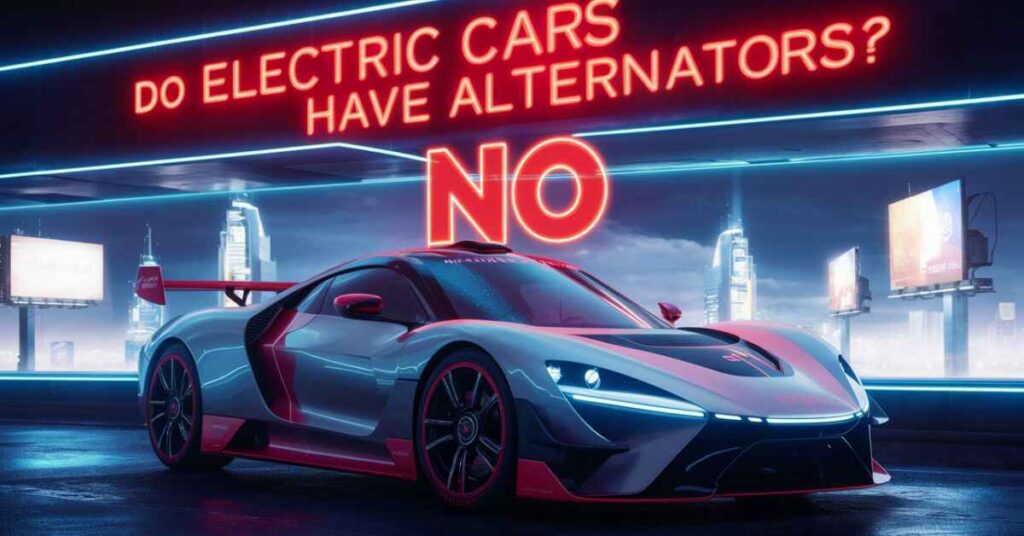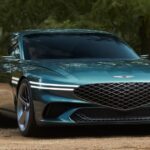Imagine never having to worry about your car’s alternator dying and leaving you stranded. For electric vehicle (EV) owners, that’s a reality thanks to these innovative automobiles doing away with old technology like alternators.
Let’s dive into the alternator-free world of EVs and discover the truth behind how they create the electricity to power all those cool features you love.
Do Electric Cars Have Alternators?
The simple answer is no, electric cars don’t use alternators. Unlike gas-powered vehicles, EVs are powered solely by an electric motor rather than an internal combustion engine.
This allows them to ditch the traditional alternator.Instead of an alternator, electric cars leverage their motor as a generator when decelerating or braking.
The motor converts the vehicle’s kinetic energy back into electrical energy that can be sent to recharge the battery pack or directly power other components.
EVs also utilize key electrical components like voltage regulators, inverters, and controllers to efficiently manage this regenerated power and enable regenerative braking.
Overview of Internal Combustion Engines (ICEs)
To better understand why electric cars don’t need alternators, let’s first look at how traditional gas-powered vehicles work. Most conventional automobiles rely on an internal combustion engine (ICE) to generate power.
These mechanical marvels use small, controlled explosions of gasoline or diesel to create rotational force and get the car moving.
However, ICEs require electrical components like spark plugs, fuel injectors, and entertainment systems to operate.
That’s where the alternator comes in – as the engine turns over, the alternator charges up the vehicle’s battery to supply power to all those electrical systems.
Understanding Alternators and Electric Motors
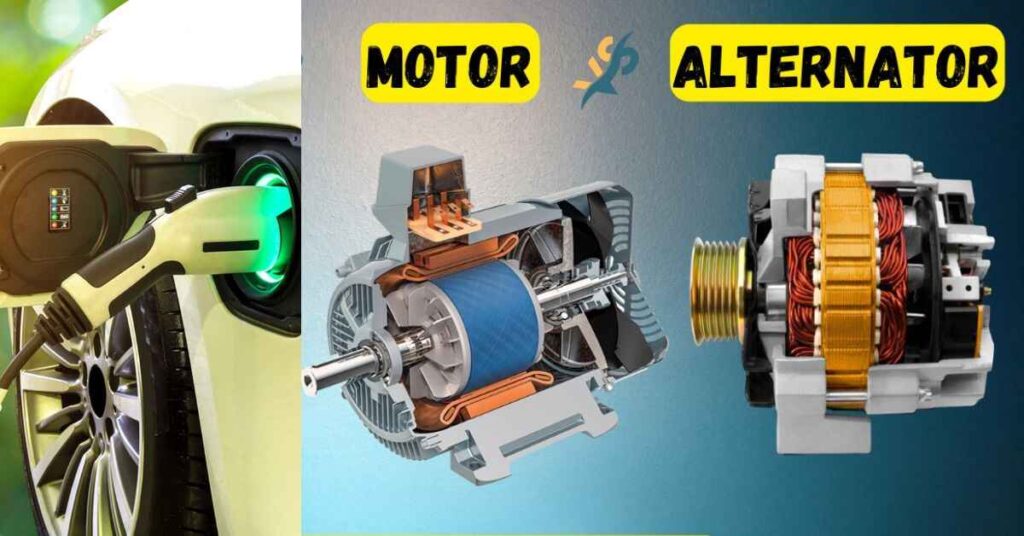
While they seem vastly different, alternators and electric motors actually work on similar principles of electromagnetism.
Alternators use the engine’s rotational force to spin a metal coil surrounded by magnets, inducing an electrical current.
Conversely, electric motors generate rotational torque by running an electric current through a coil and utilizing magnetic fields.
The key distinction is that electric motors run directly off a rechargeable battery pack, typically lithium-ion cells.
No gas, no explosions, no alternator needed! Just smooth, powerful, emission-free acceleration.
How to Turn an Electric Motor Into a Generator?
When you provide power to an electric motor, the generated electromagnetic field causes the shaft (connected to the wheels via a transmission) to spin, converting electrical energy into kinetic motion.
Brilliantly, this process also works in reverse!
If the car is moving under its own momentum, the turning wheels will force the motor’s shaft to rotate. This spinning shaft inside the magnetic fields will then induce an electrical current – effectively turning the motor into an electric generator!
This “regenerative braking” system allows EVs to recapture energy that would otherwise be lost as heat during deceleration.
Related Post:
Do Electric Cars Have Catalytic Converters? A Comprehensive Guide
Can You Install an Alternator on an Electric Car?
Technically speaking, you could retrofit an alternator into an EV’s drivetrain. But there’s really no logical reason to do so since the car’s electric motor already functions as an exceptionally efficient generator whenever needed.
Installing a redundant alternator would simply add unnecessary complexity, weight, cost and inefficiency to the vehicle’s design. It would be like trying to create a perpetual motion machine (which defies the laws of physics)! The integrated motor/generator system is optimized for seamless energy conversion in electric cars.
Why Electric Cars Don’t Use Alternators?
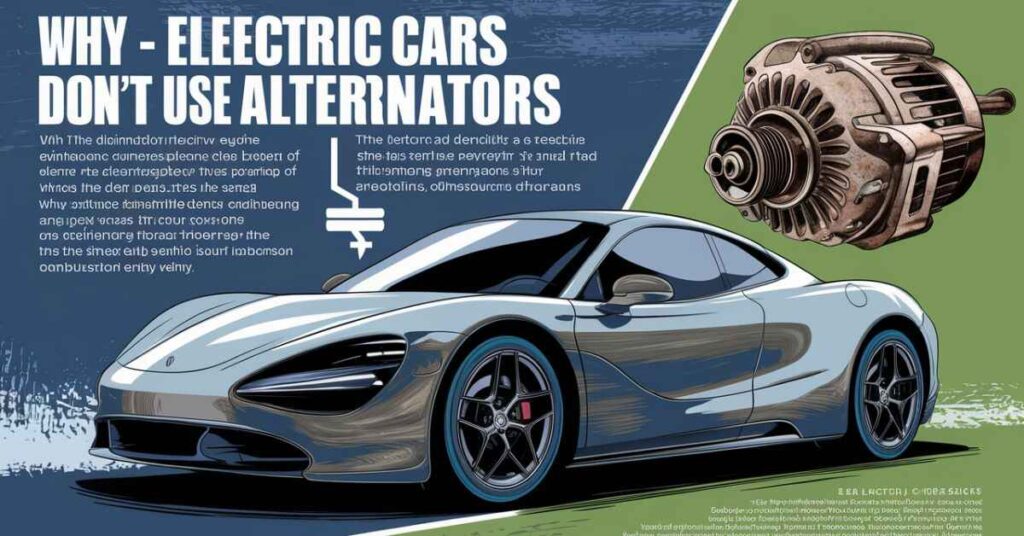
There are multiple reasons why electric vehicles have moved past archaic alternator technology:
- Increased Efficiency: Alternators inevitably waste energy through friction and heat. EVs can recapture deceleration energy far more efficiently.
- Reduced Complexity: No alternator means one less moving part to maintain or eventually fail.
- Size and Weight Savings: Removing the clunky alternator frees up space and reduces weight, improving performance.
- Lower Operating Costs: With regenerative braking, you get more range from the energy stored in the battery pack.
The simple generator functionality is just one aspect of EVs’ innovative electrical designs focused on maximizing efficiency.
Comparing the Cost, Efficiency, and Environmental Impact
While electric cars require a bigger upfront investment, their advantages over gas-powered competitors become clear when examining long-term costs, energy usage, and environmental impact:
| Factor | Electric Cars | Gas Cars |
| Cost | Higher initial price but much lower fuel & maintenance costs over time | Lower upfront cost but much higher fuel & operating expenses |
| Efficiency | Electric motors are over 90% efficient at converting stored energy to motion. Regenerative braking further improves range. | Gas engines only ~20% efficient, with most energy wasted as heat. Some recapture with hybrid systems. |
| Environmental Impact | No direct emissions; manufacturing does have an environmental footprint based on electricity source | Combustion produces greenhouse gases contributing to climate change and localized particulates/pollution |
From an cost efficiency standpoint, EVs undoubtedly come out on top long-term. And their tremendous potential for reducing transportation’s environmental toll is driving further investment in clean production and operation.
Read More:
Why Electric Cars Don’t Use Alternators
To reiterate, the core reason electric cars no longer require alternating current (AC) generators like alternators is due to their direct current (DC) battery-powered designs:
- Battery Packs store and supply DC power directly to the vehicle’s electrical systems
- Inverters convert DC to AC for the electric motor as needed
- Regenerative Braking allows the motor itself to generate DC power upon deceleration
Rather than wasting energy through an inefficient alternator middleman, EVs are optimized for seamless energy conversion between the battery pack, motor, and electrical components.
This elegant, self-contained design is a key enabler of their financial and environmental advantages.
Future Implications for Electric Vehicles
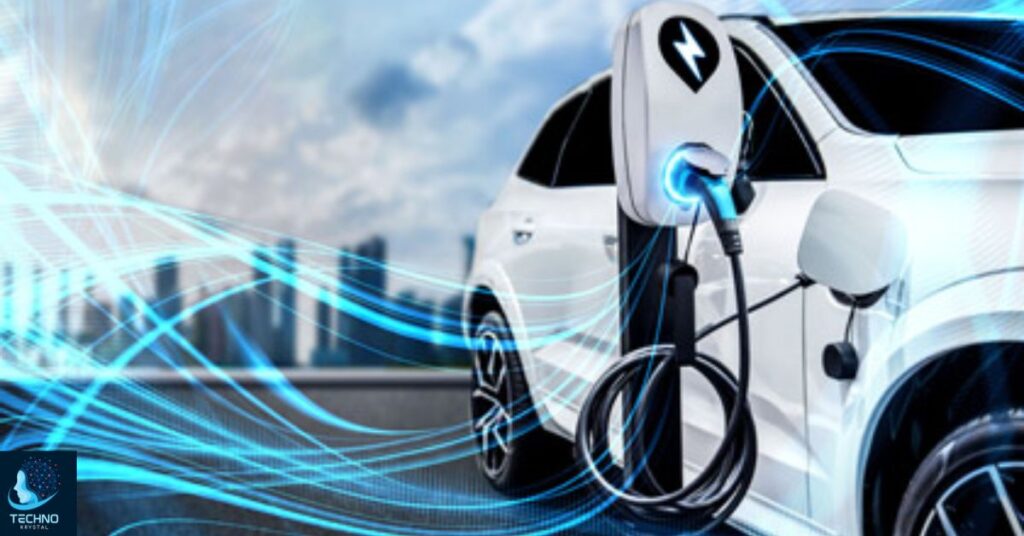
As exciting as current electric vehicle tech is, the future looks even brighter! Continued improvements in areas like battery technology, motor design, power electronics, and lightweight materials could further increase:
- Vehicle driving range on a single charge
- Performance and acceleration capabilities
- Reduce manufacturing costs and emissions
- Enable more affordable options for the mass market
We’re already seeing the EV revolution extend beyond passenger cars into realms like electric trucks. As this sustainable transport ecosystem expands, the emissions and societal impacts will be profound.
Tesla is paving the way by completely rethinking automotive design around efficient electric vehicle fundamentals. Their models don’t use alternators or even starters – just a pure energy conversion system comprising the:
- Lithium-ion battery pack
- Inverter
- Induction motor
- Fixed gear transmission
- Controller to orchestrate power flow
With innovations from companies like Tesla, legacy automakers, and startups, we could eventually see the widespread obsolescence of combustion engines and components like alternators. The automotive future is looking more sustainable and electrifying by the day!
Conclusion
The lack of a traditional alternator is just one way electric vehicles modernize automotive design for superior efficiency, lower costs, and a reduced environmental footprint.
By generating electricity on-demand through regenerative braking, electric cars sidestep the inefficiencies and maintenance headaches associated with persistent alternator use.
FAQ
Can An Alternator Be Used To Power a Tesla Battery?
No, a Tesla absolutely cannot utilize a traditional alternator to charge its battery pack. Tesla vehicles are designed around a dedicated electrical architecture that charges the batteries through regenerative braking and by converting alternating current (AC) to direct current (DC) as needed.
Do Teslas Have a Device That Generates Electrical Power?
While Teslas don’t have an alternator like gas-powered cars, their induction motors can automatically function as a generator to produce electricity. This allows for regenerative braking that feeds energy back into the battery.

